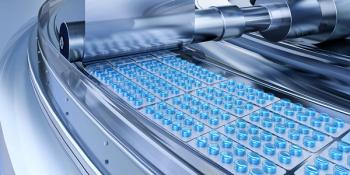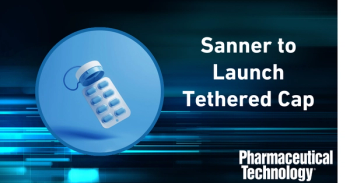
Pharmaceutical Technology Europe
- Pharmaceutical Technology Europe-03-07-2011
- Volume 23
- Issue 3
Pros And Cons Of Roll Compaction
There are two types of widely used dry granulation methods: slugging and roll compaction. Currently, roll compaction is preferred to slugging because it offers greater capacity and ease of process control.
There are two types of widely used dry granulation methods: slugging and roll compaction. Currently, roll compaction is preferred to slugging because it offers greater capacity and ease of process control. It also offers a higher manufacturing efficiency per hour and is a continuous process unlike slugging, which is a batch process.
Imjak Jeon. Regulatory Affairs Manager at Crucell Switzerland AG.Dry granulation methods are especially suitable for moisture- and/or heat-sensitive compounds because no liquid or drying steps are required. They can also be used for substances possessing poor flowability and compaction behaviour, such as acetaminophen and ibuprofen. Roll compaction, in particular, is also highly suitable for hygroscopic materials such as dry herbal extract.
Compared with wet granulation, dry granulation by roll compaction is a simpler, continuous process. In wet granulation, granules are produced according to the following steps: mixing, preparation of binder solution, granulation and drying. In dry granulation, the procedure is shorter because preparation of binder solution and drying are not required. In dry granulation, the steps are: mixing, roll compaction and milling, which requires less equipment, time and energy.
Room for improvement
One of the disadvantages of roll compaction, however, is a phenomenon called ‘loss of reworkability’. Tablets made by roll compaction often show inferior tensile strength compared to tablets prepared by wet granulation or direct compaction. Because this phenomenon is more profound in plastic substances, adjusting the plastic/brittle balances of starting materials by selecting appropriate excipients is much more. Also, minimum compaction force should be used, as well as a smaller particle size of starting powder.
A second disadvantage of roll compaction is the production of non‑compacted powder. Because no liquid binder is used, high amounts of fines remain and less product yield is obtained versus wet granulation.
More information about overcoming loss of reworkability and minimising the limitations of roll compaction can be read at
Roll compaction is a simple dry granulation method, but there are many factors that must be considered, controlled and optimised, for example, roll pressure, roll speed and the feeding rate of starting materials. These factors determine the product properties (e.g., ribbons, granules, etc.), as well as the final tablets. Important product quality such as the density of ribbons, flowability, compressibility and tabletting ability of granules, as well as the tensile strength of the finished tablets, are highly dependent on the parameters mentioned above.
Controlling these factors is important to achieve a product of desired quality. A full understanding of the chemical and physical properties of the starting materials and the process parameters is also essential. To improve roll compaction, I believe that good modelling according to the type of machine used and the characteristics of starting materials would be very helpful to predict, control and optimise the process, as well as improve product quality.
This article is part of a special feature on granulation that was published in the March issue of PTE Digital, available at
Articles in this issue
almost 15 years ago
Direct Compression Versus Granulationalmost 15 years ago
It's Goodbye From Mealmost 15 years ago
One-Pot Processing And The Benefits For Granulationalmost 15 years ago
Newsalmost 15 years ago
Calculating And Understanding Particulate Contamination Riskalmost 15 years ago
Moisture-Activated Dry Granulationalmost 15 years ago
Drug Scandal Shocks Francealmost 15 years ago
Establishing Endpointsalmost 15 years ago
Improving Solid Dosage Forms With Dry Granulationalmost 15 years ago
The Benefits Of Tablet Tooling StandardisationNewsletter
Get the essential updates shaping the future of pharma manufacturing and compliance—subscribe today to Pharmaceutical Technology and never miss a breakthrough.





